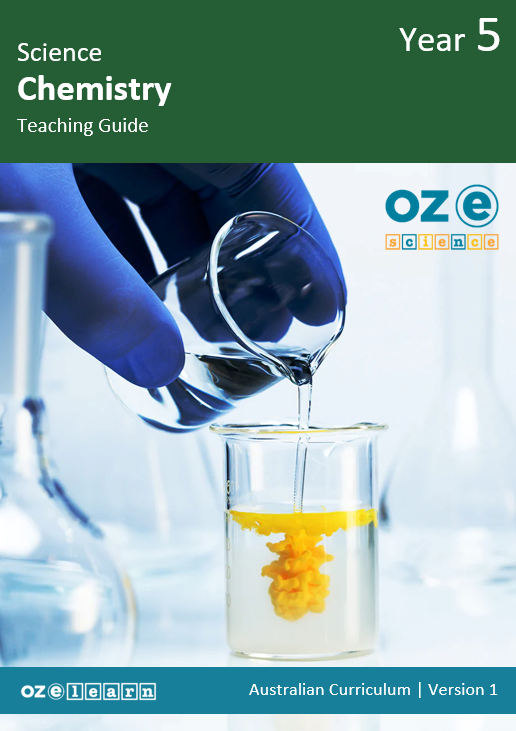Oz-e-science
In Lessons 1 to 9, students learn:
- how to identify and represent molecules
- different elements according to when they first formed in the universe
- how molecules are arranged in solid, liquid and gas
- the properties of common compounds that are solid at room temperature
- the properties of liquids are room temperature
- properties of gases at room temperature
- how to set up an experiment to investigate and communicate how growing crystals changes the state of matter.
- Explain what molecules are.
- Describe at least four common molecules.
- Represent one common molecule.
- Describe three ways in which elements are formed in the universe.
- Identify and sort elements according to when they first formed in the universe.
- Describe the formation of molecules in solid, liquid and gas.
- Describe the properties of solid elements.
- Identify the properties of solid elements.
- Report the best material to use to create a drinking cup.
- Describe the properties of solid compounds.
- Identify the properties of common solid compounds.
- Compare the properties of solid compounds.
- Describe the properties of liquid.
- Compare the properties of different liquids.
- Observe how the density of liquids affects them.
- Describe the properties of gas.
- Explain that some gases are essential for survival.
- Observe that gas molecules fill the space that they are in.
- Experiment with growing crystals.
- Investigate how different materials grow different crystals.
- Observe the experiment set-up on day one.
- Observe the crystals grown in the experiment.
- Plan how to grow crystals at home.
- Predict and hypothesise which crystals will grow best at home.
Progress Tests
Progress tests are conducted after every second lesson, allowing teachers to monitor student understanding of the concepts taught over the past two lessons and to identify where reteaching is needed. The Teaching Guide contains the testing questions, and the Student Workbook has a section where students write their answers and score themselves.
Structured Research Activity
The Structured Research Activity (SRA) for this unit is: Students plan, conduct and report on an experiment to describe how the observable properties of crystals behave and grow in different ways. The SRA takes place over two lessons so students can apply the Science Understanding and Science Inquiry Skills covered in the unit. Teachers use the Guide to Making Judgements, which is included in the Teaching Guide, to mark the SRA.
End-of-Unit Assessment
The last lesson is the end-of-unit assessment, which has a variety of question formats (e.g., label the diagram, circle the correct answer) to assess student mastery of content from the unit. The end-of-unit assessment is in the Teaching Guide. Teachers copy the assessment and distribute to students at testing time.
Oz-e-science applies a teaching approach and curriculum that uses explicit teaching of content and knowledge of science as well as explicit teaching and practical scientific inquiry using the Scientific Method. Read more about pedagogy here.


